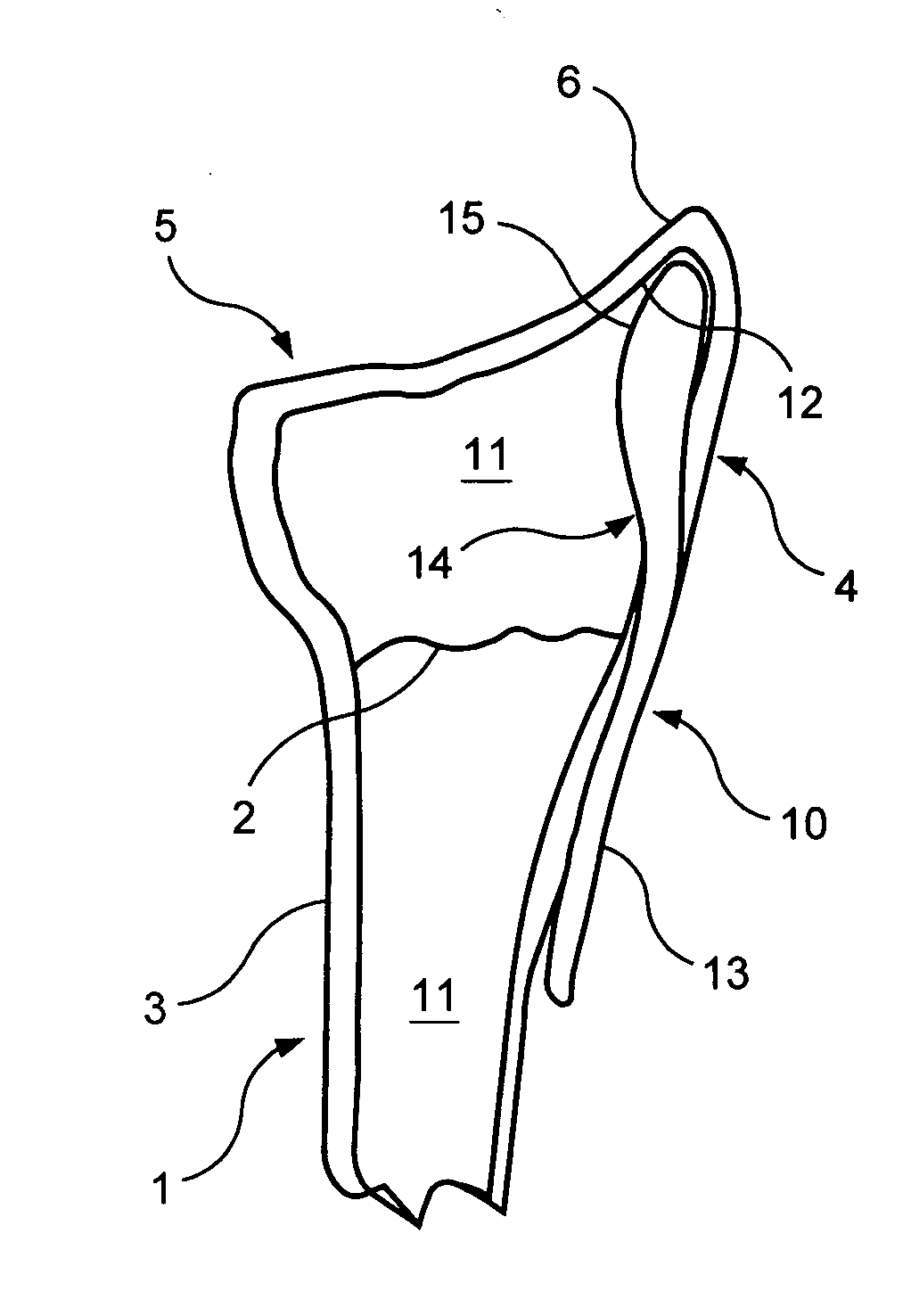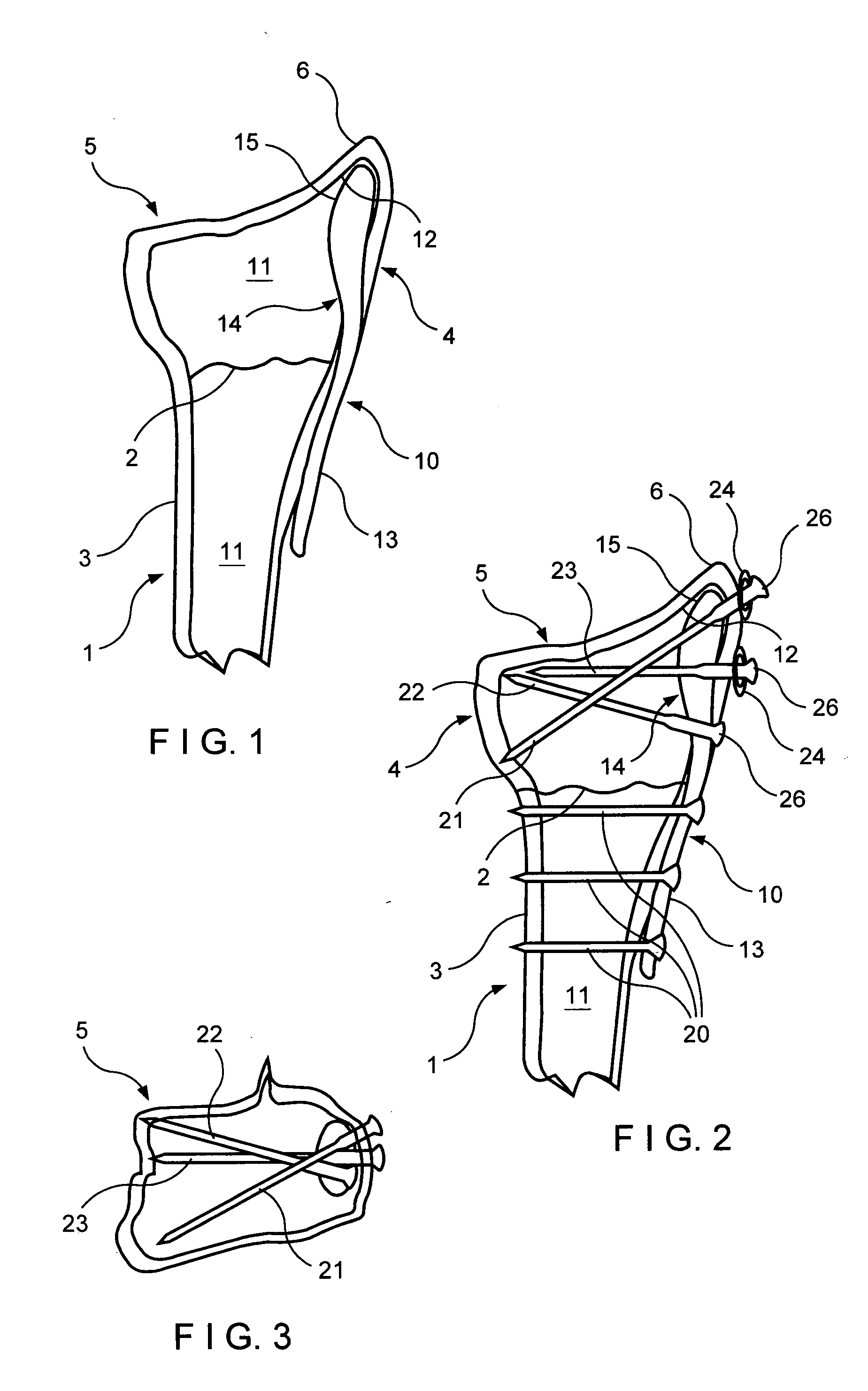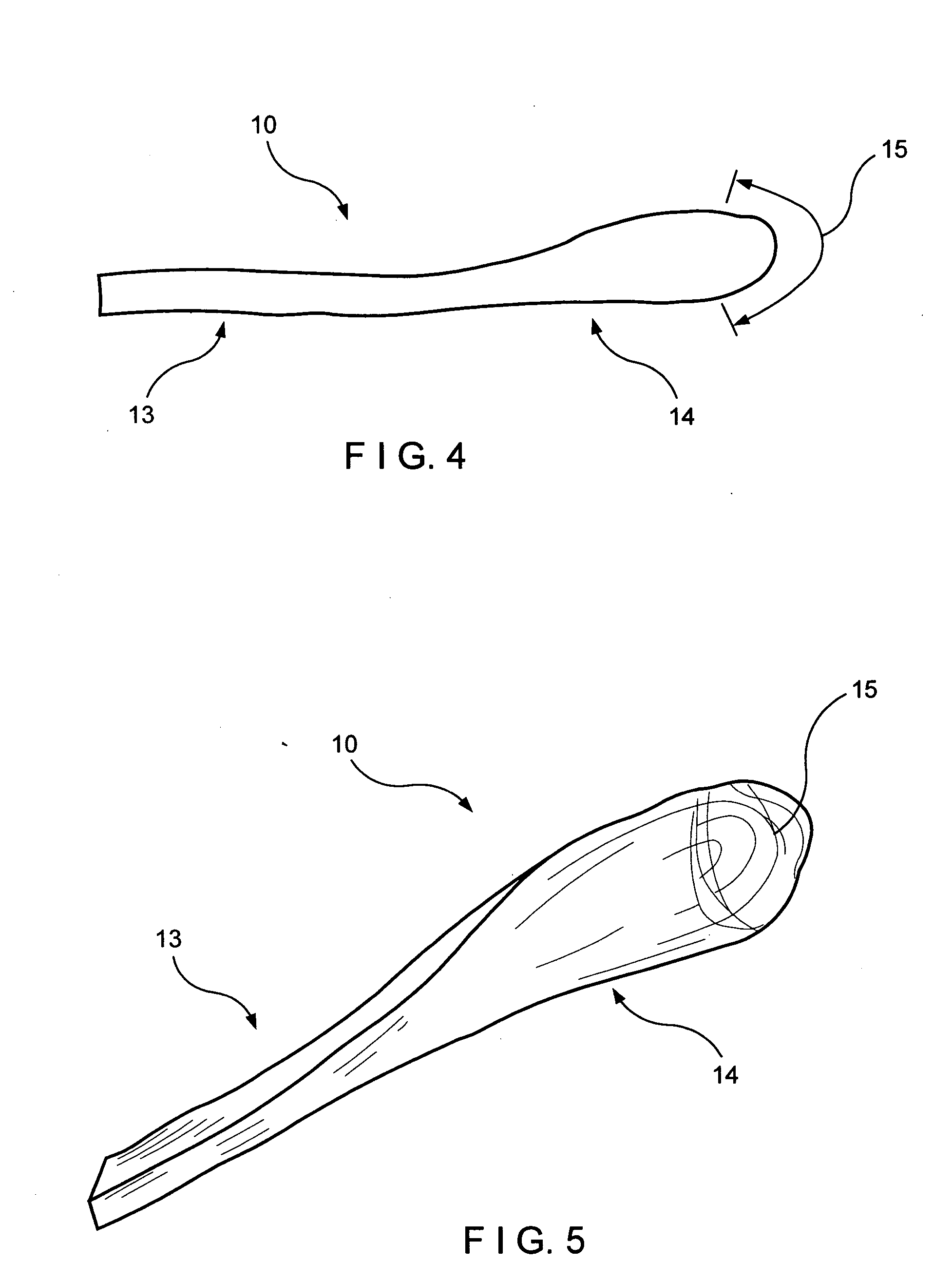Intramedullary implant for fracture fixation
a technology of intramedullary implants and fractures, which is applied in the field of intramedullary implants for fracture fixation, can solve the problems of high deformation load across the fractured articular surface, loss of reduction of joint surface, and malposition of wrist, and achieves the effects of reducing the risk of failure, and maintaining the length of fragments
- Summary
- Abstract
- Description
- Claims
- Application Information
AI Technical Summary
Benefits of technology
Problems solved by technology
Method used
Image
Examples
Embodiment Construction
[0037] The invention will be described hereafter with reference to fixation of a fracture of the radius of the wrist utilizing an intramedullary implant which is braced against the apex of the lower tip of the radial styloid to serve as a prop or buttressing means to hold an unstable fragment of the fracture at length to prevent shortening. However, as will be evident to those skilled in the art, the invention is applicable to other fractures as well, in which the implant can be inserted into an intramedullary canal and braced in an inner apical surface of a bone fragment adjoining the fracture. Suitable examples are the distal end of the fibula, the medial malleolus of the ankle and the distal end of the ulna.
[0038] Referring to FIG. 1, therein is seen a bone 1, namely the radius of the wrist, in which a fracture 2 is present at its distal end and forms a stable proximal bone fragment 3 and an unstable distal bone fragment 4. The distal bone fragment 4 has a distal end 5 which inc...
PUM
 Login to View More
Login to View More Abstract
Description
Claims
Application Information
 Login to View More
Login to View More - R&D
- Intellectual Property
- Life Sciences
- Materials
- Tech Scout
- Unparalleled Data Quality
- Higher Quality Content
- 60% Fewer Hallucinations
Browse by: Latest US Patents, China's latest patents, Technical Efficacy Thesaurus, Application Domain, Technology Topic, Popular Technical Reports.
© 2025 PatSnap. All rights reserved.Legal|Privacy policy|Modern Slavery Act Transparency Statement|Sitemap|About US| Contact US: help@patsnap.com



